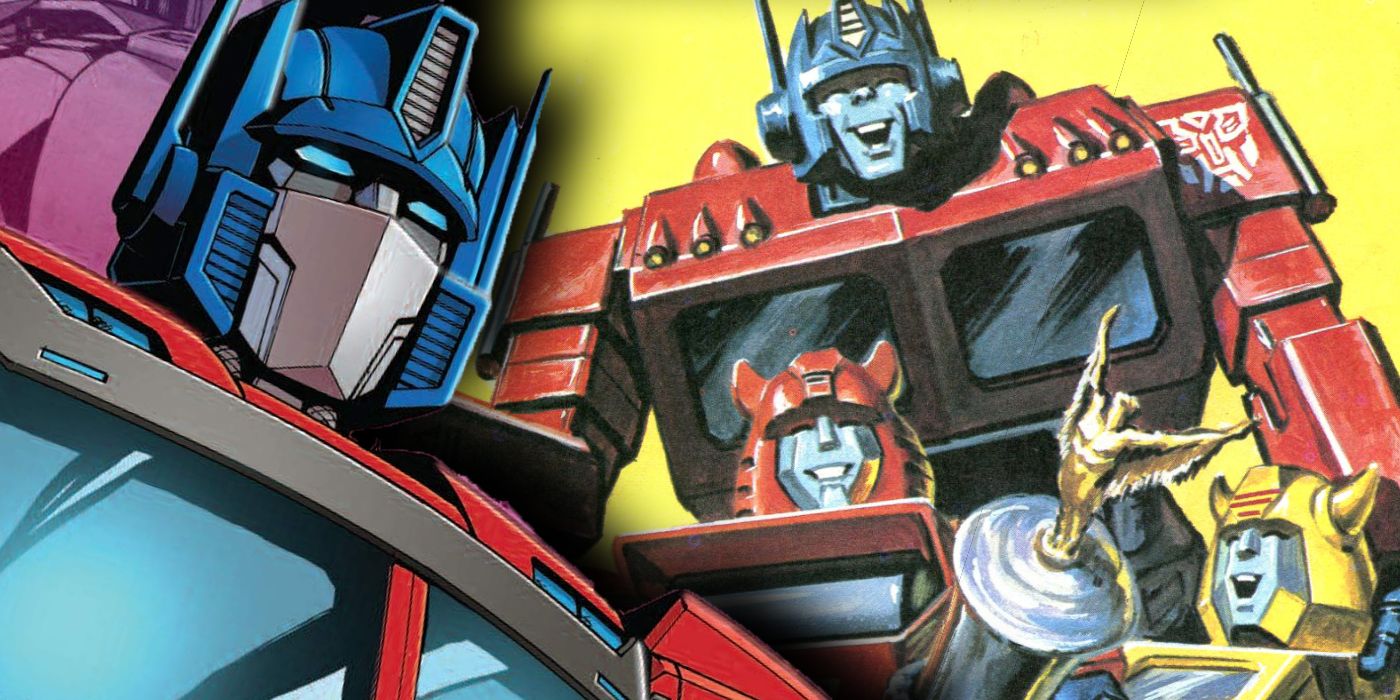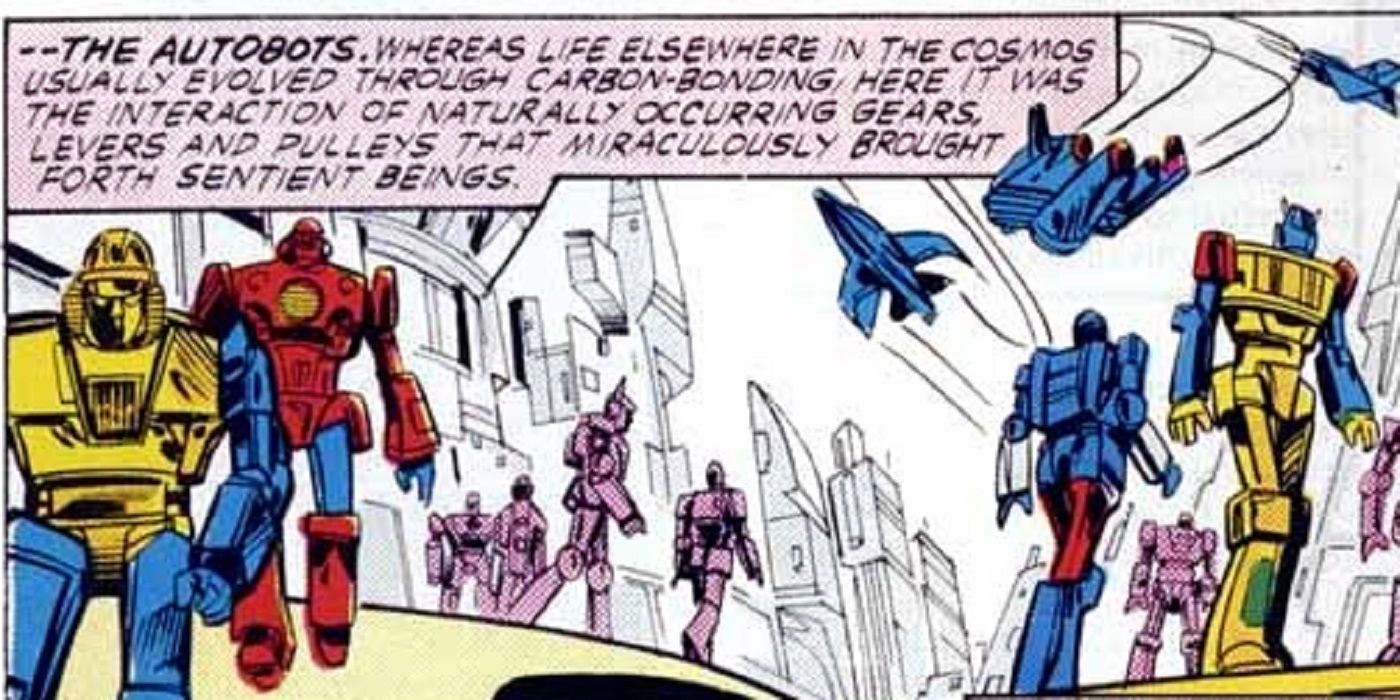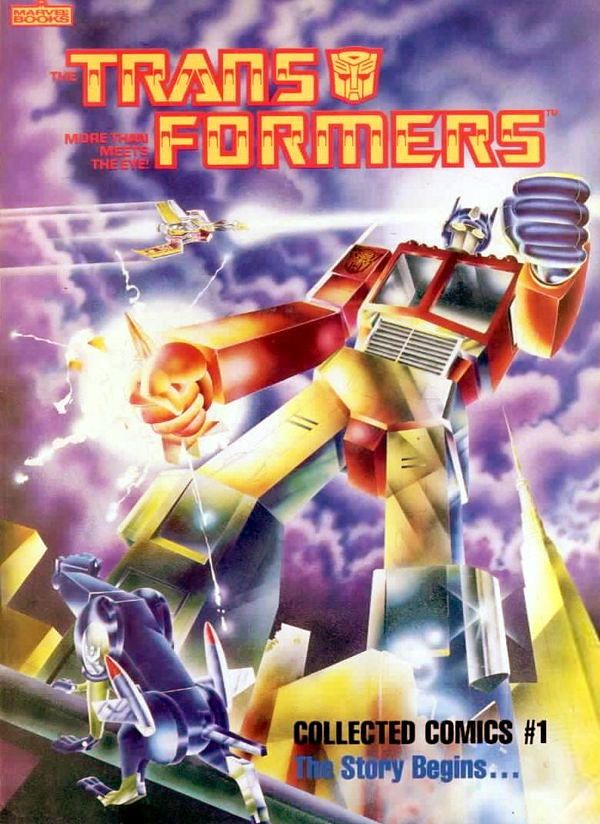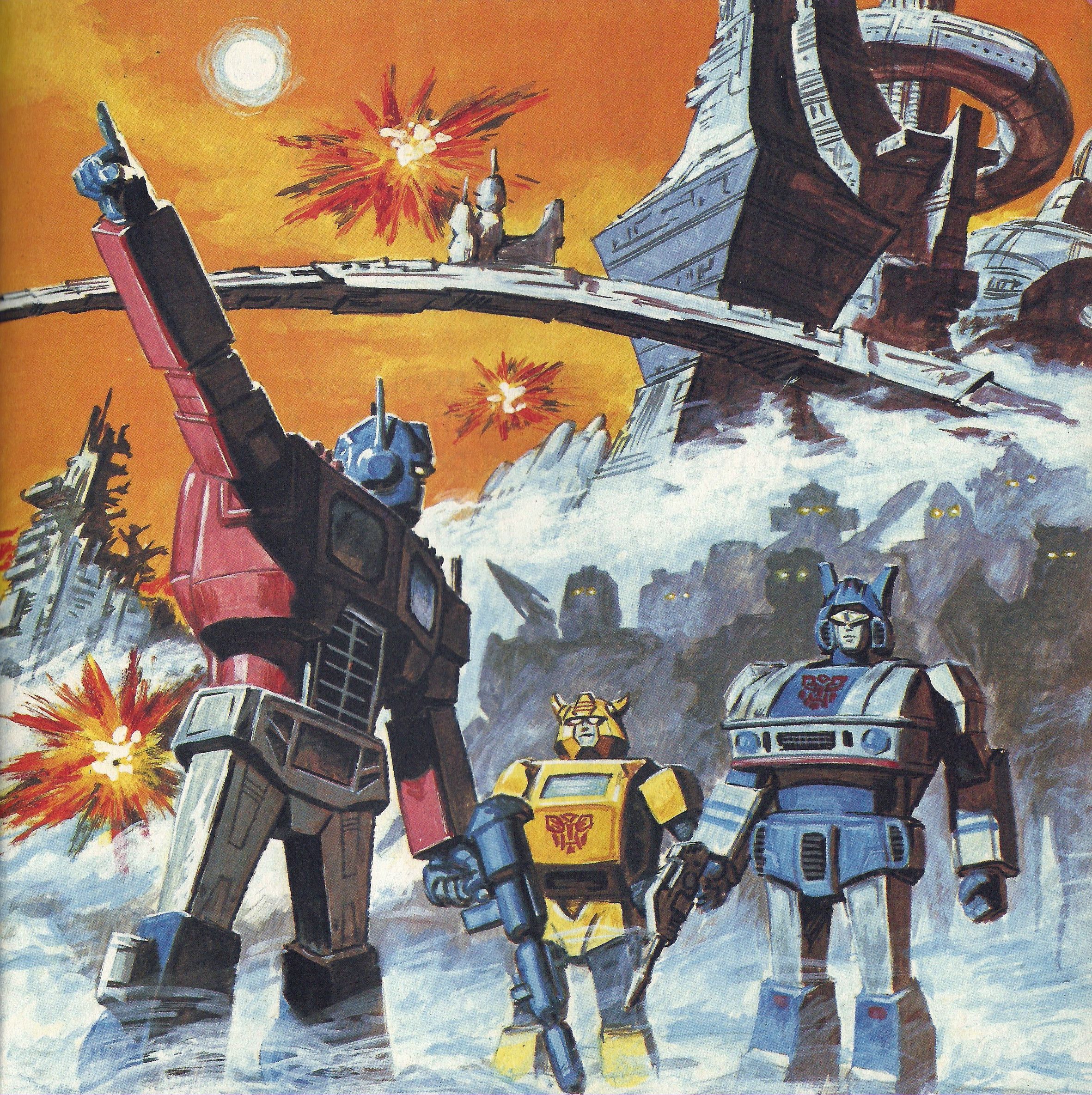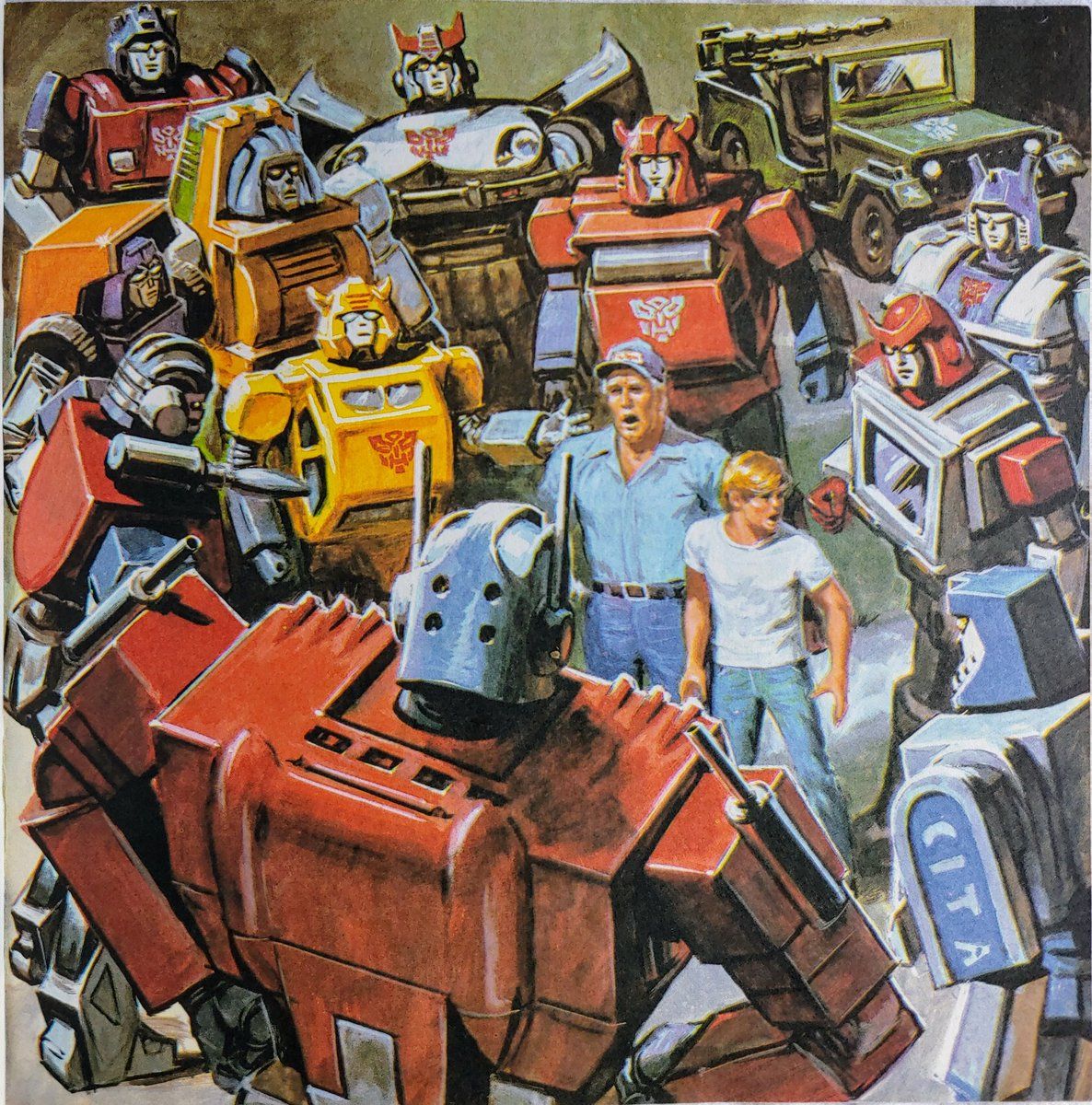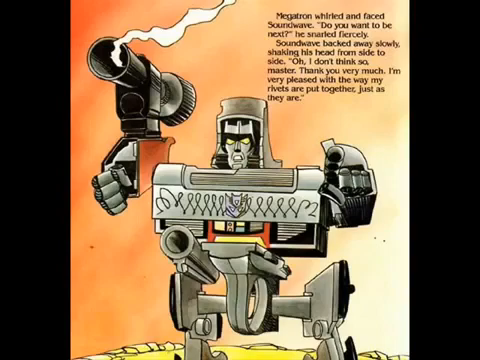Welcome to a special edition of Adventure(s) Time, where I look back on animated heroes of the past. This week, we're going a little off the beaten path and looking at some curiosities from the earliest days of Marvel's relationship with Hasbro. Specifically, Marvel's attempts to build a mythos around Hasbro's Transformers toyline.
The earliest origins of the Transformers go back to the 1970s and 1980s Japanese toylines Micro Change and Diaclone. These were toy robots with the gimmick ability to transform into weapons, vehicles, or everyday household items. Hasbro licensed the toy molds, and aware competitor Tonka was producing a rival transforming robot line called GoBots, understood the necessity of creating a unique brand for their Transformers.
Hasbro turned to Marvel Comics, already a partner in their rejuvenated G. I. Joe line, to conceive of a backstory for the characters. Marvel's editor-in-chief Jim Shooter wrote an overall treatment establishing the franchise's basic concept involving rival robot factions -- one noble and one nefarious -- that escape their home planet and are stranded on Earth and passed development over to editor Denny O'Neil. (Shooter's role in creating the earliest Transformers concepts was largely unknown until he began writing about it on his blog back in 2011.) Shooter was unhappy with O'Neil's work, although O'Neil did conceive of the name of the heroic leader "Optimus Prime." Another editor, one with far more experience penciling than writing comics, was given the task of fleshing out the Transformers cast. This was Bob Budiansky, who went on to write the majority of Transformers issues and name most of the characters.
Although this initial development might seem chaotic, the essentials remain to this day. The heroic Autobots, led by Optimus Prime, defend the Earth against the ruthless Decepticons and their leader Megatron. The premise was spelled out in the earliest issues of the Marvel comic and was the basis of the animated series' opening episodes. (The cartoon was from Marvel Productions, the animation studio that shared owners with Marvel Comics.)
What many don't know is that Marvel's agreement with Hasbro wasn't limited to monthly comics. A Marvel Books division had been established in 1982 to publish children's books, coloring books, and sticker sets based on Marvel's licensed properties. Spider-Man co-creator Steve Ditko, during a period when he was still professionally active but unwilling to work on morally conflicted heroes, contributed to several Transformers coloring books for this line, including "Bumblebee to the Rescue!" and "The Deadly Fuel Shortage."
Some of Marvel's earliest trade paperbacks also came from this imprint. The Transformers: The Story Begins... is a reprint of the first three Transformers comics, published in a square-bound format with a sturdy cover, intended for a bookstore market. No one would think twice about such a product today, but it was an oddity in 1985.
In addition to reprinting the comic for a new audience, Marvel Books also published Transformers softcover storybooks; some rereleases included either an audio cassette or 45 rpm record of actors dramatizing the story. These have become collector's items for diehard Transformers fans.
One point of interest is that some featured painted art from noted artists like Earl Norem. Norem has earned a devoted following due to his painted work depicting the Hulk for the covers of Marvel's 1970s Rampaging Hulk magazine, and his merchandise art for Mattel's Masters of the Universe in the 1980s.
"Battle for Cybertron" features Norem's take on the Transformers' origin, as written by Scott Siegel. The story's a simplified take on the earliest comics and cartoon episodes, detailing the Transformers' arrival on Earth and initial meetings with teenager Spike Witwicky and his mechanic father, Sparkplug. The climax, however, occurs at a nuclear power plant, oddly enough.
Other deviations from standard Transformers lore include a name for the Witwicky's town (called Kimball here and only here), Autobots that are only as tall as humans, "the Ark" cast as the Autobots' computer instead of their ship (and giving it a distinct personality), and establishing that Starscream has dozens of Seeker brethren, instead of only two.
If for nothing else, the painted art from Norem makes the book worth the attention of even a casual Transformers fan. Norem would go on to paint three more of the storybooks, including one of the final titles, "The Story of Wheelie, the Wild Boy of Quintesson," which gives an alternate origin for characters introduced in 1986's Transformers: The Movie. Other notable installments include 1985's "Decepticon Hijack" and "Insecticon Attack!" featuring watercolor paintings from artist John Speirs. "Decepticon Hijack" is actually the only appearance of the Transformer called Shooting Star, a spacecraft that was possibly reimagined as the Autobot Cosmos in 1985.
Future installments of the storybooks also establish hundreds of Dinobots, Autobots who can also fly in their vehicle modes, Decepticons who desire oil but never mention Energon, Optimus Prime depicted with a mouth instead of a mouthplate (years before the first Michael Bay movie) and characterizations that don't match established personalities, such as the normally stoic Soundwave shouting exclamations like "Oh, my goodness!"
Another curiosity regarding the storybooks is their relationship with the animated Transformers series. The initial books were likely produced before the show aired, so it's understandable that the voice actors make no attempt to match the cartoon's voice cast.
However, as the books go on, there's a clear effort to imitate the popular voices from the cartoon, down to even putting an electronic vocal effect on the actor depicting Soundwave. Yet, as the actors sound more like the cartoon, the visuals take a swerve in the opposite direction.
The popular visuals of the 1980s Transformers often bear little resemblance to the actual toys. Most of the cast were redesigned by artist Floro Dery, who was the design supervisor on the cartoon and Transformers: The Movie. Even before Dery was assigned to work on the cartoon, the toys had already received animation models for the 1984 run of commercials by Japanese artist Shōhei Kohara. These were simplified for a daily cartoon's budget by Dery, who went on to adapt more toys for animation and define the show's look.
Bizarrely, the later storybooks abandon Floro Dery's character models and return the Transformers to toy-based drawings, and some specific shots copied directly from the toys' package artwork. So, the result is a Megatron that sounds an awful lot like Frank Welker, but looks like the toy's alt mode, complete with the gun trigger pelvis and ultra-skinny legs. These earliest toys came from Japan, of course, and weren't designed with any thought of giving the vehicle's alt-modes human personalities and anthropomorphized faces.
Ratchet and Ironhide also revert to their strange toy models in these editions, literally losing the heads given to them by Dery. Bumblebee, perhaps the toy that underwent the most drastic of redesigns for animations, resembles his animation model in the earliest books, but is depicted as 1984's truly alien toy design with an expressionless face. This had to be quite a shock for kids who only knew of the Bumblebee with the cartoon's childlike face.
The YouTube channel RetroRobotRadio has been archiving many of these storybooks, including another series published only in the UK by Ladybird Books. They're a strange time capsule of an era when the Transformers canon was still quite in flux.

